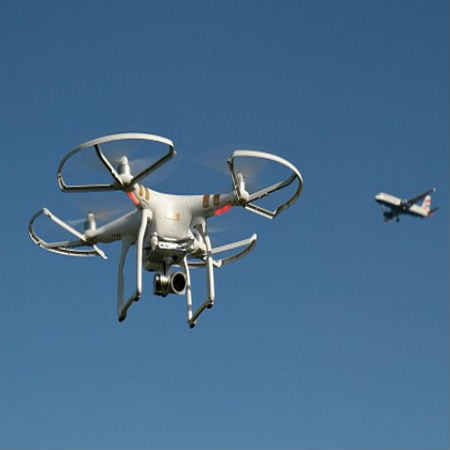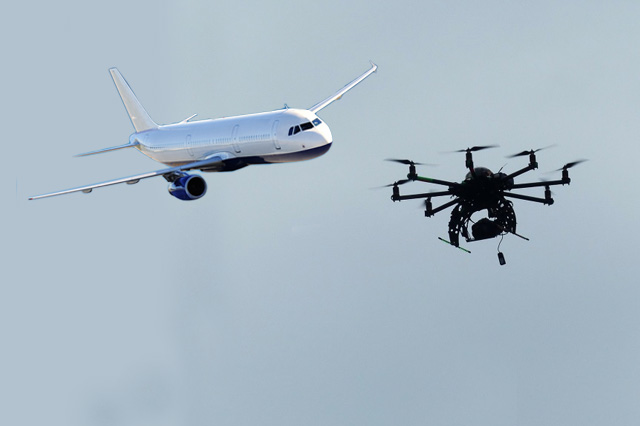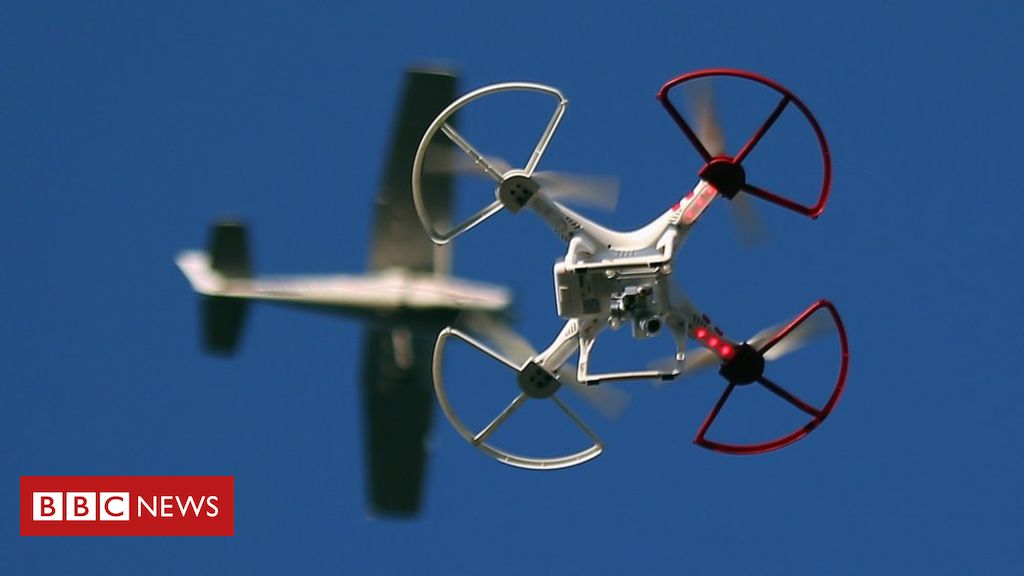
In a recent study by George Mason University, it was found that the US government officials’ grave warnings that drones could lead to a disaster above the nation’s airports due to drone and aircraft collision are nothing but overstated concerns.
It was reported that birds are a much bigger threat to aircraft than the unmanned aerial systems (UAS).
“We estimate that 6.12 x 10−6 collisions will cause damage to an aircraft for every 100,000 hours of 2 kg UAS flight time. Or to put it another way, one damaging incident will occur no more than every 1.87 million years of 2kg UAS flight time,” the authors observe.
Drone And Aircraft Collision: Highly Unlikely?
Scroll down for video

What the Study Focuses On
The study investigated incidents of bird strikes on American aircraft since 1990, and the incidence of actual injury to passengers. Within the period, 389 people have been injured by a bird strike, although 100 of those came from a single event when US Airways Flight 1549 was forced to land in the Hudson River.
For record purposes, there have been only 12 in the last 25 years due to animal impacts, and only one of those was on a commercial airliner. The rest of them were helicopters, experimental and vintage aircraft, or they were smaller propeller-driven planes.
It was estimated that there are about 10 billion birds in US airspace, so using this data, the boffins believe that the likelihood of a bird strike is about one bird in a million hitting an aircraft. However, there are only a million drones in operation, so that brings the odds down considerably.
The study, however, identified some weaknesses. First, there is no research on the physical effect of drones hitting aircraft. Also, the impact of a battery pack on a jet turbine or cabin screen is likely to be greater than that of a bird of a similar weight as the drone.
On the other hand, the study further stressed that since birds tend to flock together, if an aircraft hits a flock, the potential damage is much greater. For instance, in the case of Flight 1549, it was a flock of geese that took out both engines simultaneously, forcing it to land in the Hudson River.

BBC
The study also negates the fact that most airports deter birds from entering their airspace by using chemical or auditory repellents and sometimes by hosting tame birds of prey that patrol the perimeter.
The bottom line under the present circumstances should be that the status quo be maintained. It is not a bad idea for aviation authorities to carry on enforcing blocks on drone traffic around airports pending a substantive research that could remove such fear completely. Drone and aircraft collision may be “highly improbable”, but it is still a threat and this issue is continuously being addressed with caution.
Watch the video below